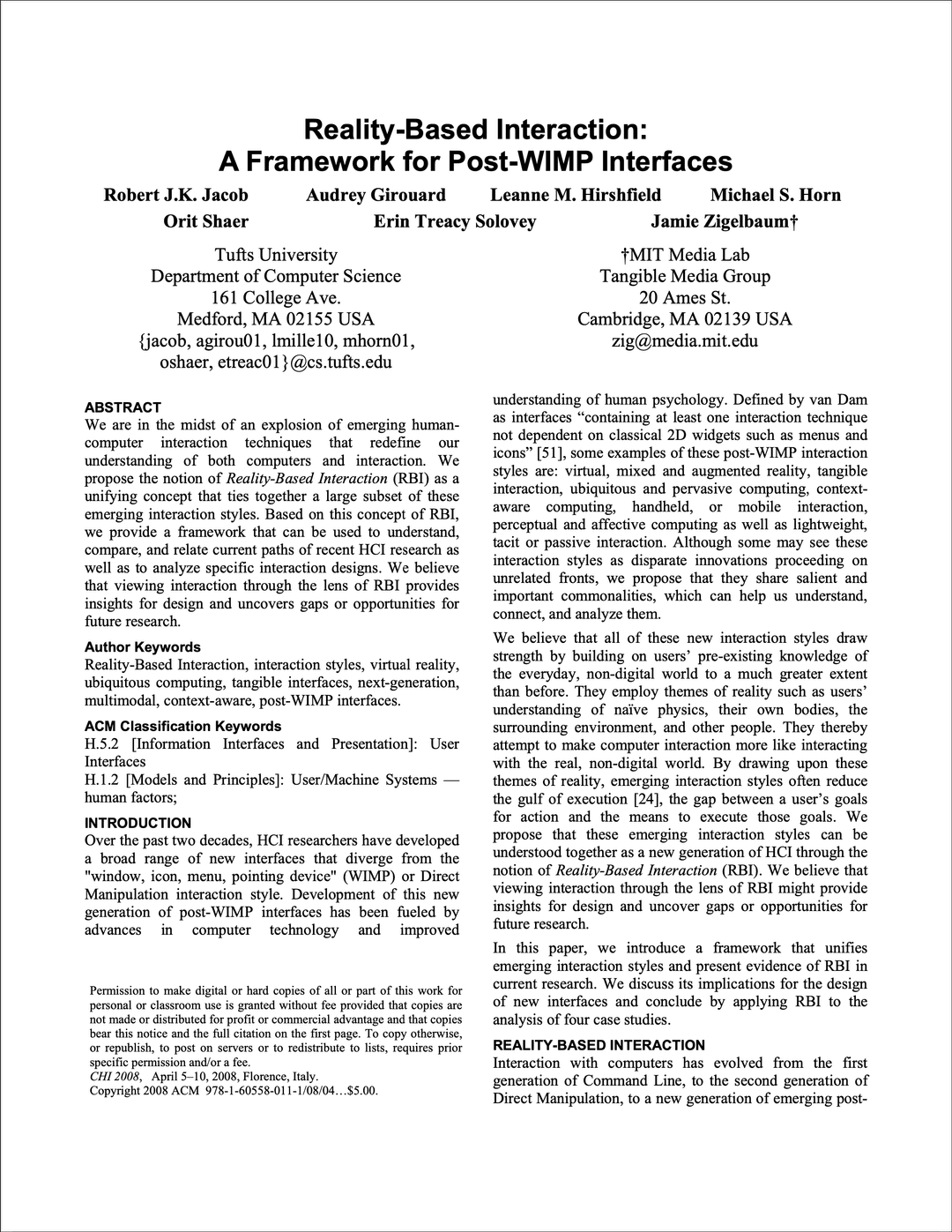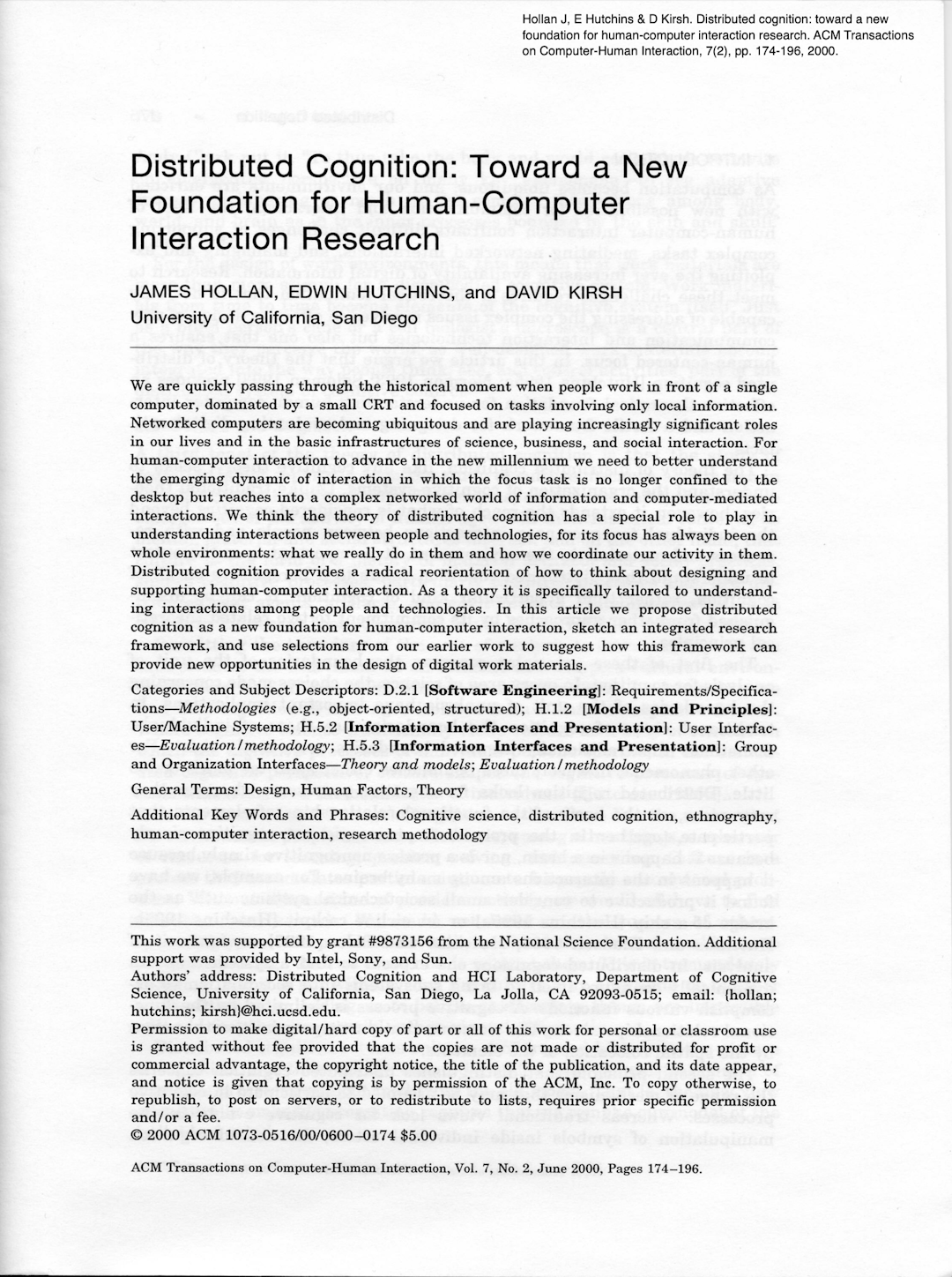Evolution /
How Has Ubiquitous Computing Redefined HCI Interactions?
Entering the 21st century, HCI expanded beyond desktop computing into the emerging landscape of ubiquitous technology woven into everyday environments and activities. This era of “calm computing” posed new challenges to traditional GUI interaction paradigms optimized for office settings. Pioneered by researchers like Mark Weiser at Xerox PARC, ubiquitous computing prototypes experimented with alternative input modalities situated in real-world contexts, including early gesture recognition systems, speech interfaces, and Tangible Bits. These explorations acknowledged the richness and variability of human behavior and drove HCI toward more embodied and context-aware interactions. As mobile devices proliferated and sensing capabilities advanced, the boundaries of computing began to disappear into the fabric of physical spaces and task flows. Principles of calm technology guided subtle integration, with systems receding when not needed. This disappearing computer vision realized Weiser’s early hopes that ubiquitous computing could foreground human-human cooperation and interaction. Today, the permeability of digital and physical worlds continues to transform HCI focus toward embodied cognition, cooperating ensembles, AI-mediated collaboration, AR/VR immersion, and interaction modalities that better reflect the continuum of cognition spanning brain, body, and world. The post-desktop era propels HCI into an integrated science of experience.

Reality-Based Interaction: A Framework for Post-WIMP Interfaces
Robert J.K. Jacob, Audrey Girouard, Leanne M. Hirshfield, Michael S. Horn, Orit Shaer, Erin Treacy Solovey, Jamie Zigelbaum · 01/04/2008
"Reality-Based Interaction: A Framework for Post-WIMP Interfaces" serves as a seminal resource in the Human-Computer Interaction (HCI) realm, pushing the envelope beyond Windows, Icons, Menus, and Pointing devices (WIMP) interfaces. The paper introduces the Reality-Based Interaction (RBI) framework, which draws from real-world experiences to create more natural user interfaces.
- Reality-Based Interaction (RBI): RBI leverages innate human skills to design interfaces that are more intuitive and aligned with natural human behaviors. This breaks the mold of traditional WIMP interfaces and introduces a paradigm of HCI that is more in sync with how humans naturally interact with their environment.
- Four Themes: The authors identify four themes—Naïve Physics, Body Awareness, Environment Awareness, and Social Awareness—as the pillars of RBI. These themes encapsulate various aspects of real-world interactions that can be brought into the digital interaction design.
- Design Principles: The paper offers RBI as a guiding framework for designers to make interaction more natural, indicating a shift towards more immersive and integrated user experiences.
- Ubiquitous Computing: RBI has implications for ubiquitous computing, advocating for interfaces that are seamlessly integrated into the physical world, thereby reducing cognitive load on the user.
Impact and Limitations: The RBI framework has been instrumental in guiding research and development of natural user interfaces, including but not limited to gestural and voice-based systems. However, RBI can sometimes make assumptions about 'natural' behaviors that may not be universal, thus necessitating culturally sensitive design approaches.

The Three Paradigms of HCI
Steve Harrison, Deborah Tatar, Phoebe Sengers · 01/01/2007
This paper maps the development of HCI research through three significant paradigms: human factors, cognitive science, and situated action. It offers a unique interpretation of the HCI field's evolution and its implications for future research.
- Human Factors: The paper revisits this earliest HCI paradigm, asserting that it focused on designs suited to human physical capabilities, while acknowledging its inability to cater to individual user differences.
- Cognitive Science: The authors argue that this paradigm expanded the HCI scope to include mental processes and models, improving interaction possibilities but retaining a decontextualized understanding of users.
- Situated Action: Esteeming this as the current HCI paradigm, the authors explain that it prioritizes context-specific user actions and interactions, supporting designs that adapt to specific user contexts.
- Evolution and Future of HCI: The paper contends that understanding these paradigms helps anticipate the possible trajectories of HCI research, particularly towards more context-aware, intuitive, and inclusive user interfaces.
Impact and Limitations: The Three Paradigms of HCI forms the historical framework of HCI research and anticipates future trends. However, its categorization may seem overly simplistic in the face of HCI’s multifaceted advancements. Sweeping paradigm changes may hide subtler, gradual shifts, which could be a focus for further research.

Why CSCW Applications Fail: Problems in the Design and Evaluation of Organizational Interfaces
Jonathan Grudin · 01/01/1988
This resource assesses the frequent failures of Computer Supported Cooperative Work (CSCW) applications, exposing a relationship between the design, evaluation of these applications, and their organizational interfaces.
- CSCW Applications: CSCW applications promise to streamline group tasks but often fail due to design limitations. Designers err on focusing on individual tasks, neglecting group dynamics and collaborative efforts.
- Organizational Interfaces: The paper illustrates the significance of interfacing with organizational structures during the design of CSCW systems. The problematics surface when there is a disjoint between the designed application and the organization's workflow.
- Evaluation Methods: The paper critiques conventional HCI methods for evaluating organizational interface design, arguing for more holistic approaches that factor in organizational culture and processes.
- Failure Causes: Grudin attributes failure of CSCW applications to their inability to comprehend and reconcile different needs and practices within the organization.
Impact and Limitations: This paper has critical implications for the design of collaborative technologies, emphasizing the need to align user interface design with group dynamics and organizational culture. The paper, however, does not provide specific methods for implementing its insights, calling for further research and practice-based experimentation in this area.

Bricks: Laying the Foundations for Graspable User Interfaces
George W Fitzmaurice, Hiroshi Ishii, William Buxton · 01/05/1995
This paper introduces graspable user interfaces, pioneering the idea that physical controls can supplement GUIs in order to improve HCI interaction.
- Graspable User Interfaces: Presents the concept of Graspable user interfaces, where physical objects are used as controls for computer interfaces enhancing interaction and user experience.
- Bricks System: Describes the implementation of the "Bricks" system, a prototype setup using physical blocks as a complement to direct manipulation interfaces.
- Multi-Hand Interaction: Studies the utilization of both hands for interactions, allowing users to engage in spatial tasks intuitively and efficiently.
- Input and Output Coupling: Demonstrates the potential of closely coupled input-Output systems, enabling seamless and integrated interactions.
Impact and Limitations: The ideas presented in this paper were impactful in shaping the development of tangible computing and pursuing HCI design thinking past the WIMP Paradigm. Yet, the Bricks system, as a prototype, has some limitations in versatility and scalability. Further research and experimentation on tangible user interfaces beyond the traditional monitors-keyboard-mouse setup is suggested.

Distributed Cognition: Toward a New Foundation for Human-Computer Interaction Research
James Hollan, Edwin Hutchins, David Kirsh · 01/06/2000
This seminal research offered a revolutionary perspective in the HCI discourse, introducing the concept of distributed cognition as the foundation of HCI research. It challenged the conventional, individual-centric approach, suggesting a distributed framework that emphasizes the interactions between humans and the broader sociotechnical systems.
- Distributed Cognition: The authors introduce this concept to explain how cognitive processes are not confined to an individual but spread across people and artifacts. It expands the scope of HCI analysis.
- Sociotechnical Systems: It’s not about solitary interaction between human and computer. Rather, HCI factors in the complex interplay within broader sociotechnical systems, making design more user-centric.
- Cognition as a Process: The paper emphasizes cognition as a process – not necessarily located within a human mind, but across humans, objects, environment, and their interaction, redefining traditional understanding.
- Artifacts as Cognitive Systems: The authors argue that artifacts are not passive elements but active participants in cognitive systems, achieving cognitive functions through interaction with users.
Impact and Limitations: The distributed cognition framework significantly influenced HCI research and design, by highlighting the necessity of understanding the interaction between humans, objects, and the environment. However, it also demands an intricate analysis of the broader systems and their change over time, making the approach comparatively more complex and challenging. This opens up future research opportunities for designing effective tools for analyzing distributed cognitive systems.